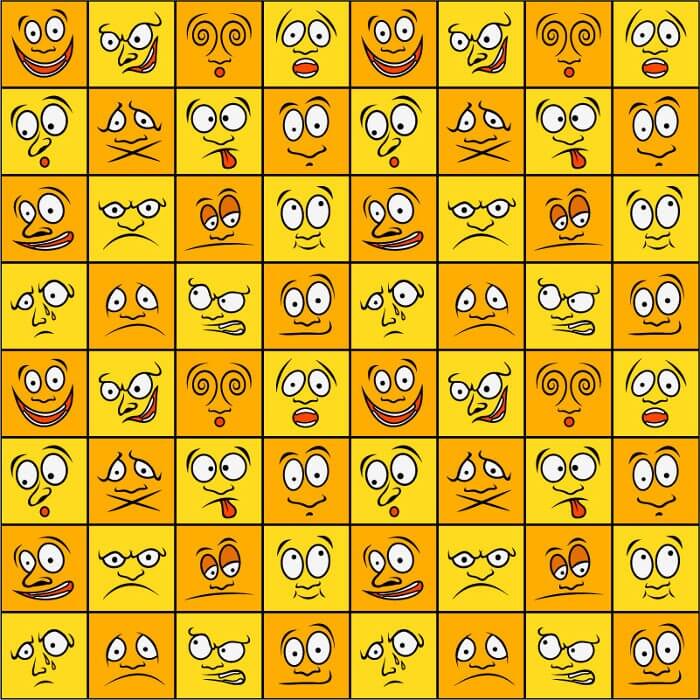If you stop to think for a moment, you’ll realize that emotions dominate much of our lives, but have you ever stopped to think about how many emotions there really are, can you explain what those emotions are?Could you describe them without using a metaphor, such as “I have butterflies in my stomach” or “I have a lump in my throat”?
Psychologist Robert Plutchick said there are more than 90 different definitions of “emotion” suggested by psychologists. In this way, the difficulty in defining and identifying emotions is exacerbated, since none of the experts reach an agreement or at least represents it in different ways, especially considering that emotions are very personal. The fact that emotions often mix with each other also does not make it easier to define the number of emotions.
- The question of how many emotions there are comes from afar.
- As early as the 4th century BC.
- Aristotle attempted to identify the exact number of basic emotions.
- Known as the 14 irreducible emotions.
- In which Aristotle identified fear.
- Trust.
- Anger.
- Friendship.
- Calm.
- Enmity.
- Shame.
- Shame.
- Compassion.
- Kindness.
- Envy.
- Anger.
- Emulation.
- And contempt.
Centuries later, Charles Darwin, in his book The Expression of Emotions in Humans and Animals (1872), suggested that the ability to express emotions through the face had evolutionary advantages. He also suggested that many of these emotional expressions were universal.
More recently, psychologists have made a number of attempts to classify and identify the exact number of emotions, and surprisingly, when it comes to basic and universal emotions, there are actually far fewer than you think, according to the best-known theories that rank in human emotional experience, there are about four basic emotions everywhere.
One of these most important theories is Robert Plutchik’s Wheel of Emotions, which identifies eight basic emotions: joy, sadness, confidence, aversion, fear, anger, surprise and anticipation. The wheel of emotions is similar to the color wheel, in which the main colors combine to form secondary and complementary colors. These basic emotions mix and combine to form a variety of feelings.
Other researchers suggest that about six or seven basic emotions are felt in cultures around the world. Psychologist Paul Eckman created what we call the Facial Action Coding System (FAC), a taxonomy that measures the movements of the 42 facial muscles and the movements of facial muscles. head and eyes. Eckman discovered that there were six universal facial expressions.
These six original emotions identified by Eckman were joy, sadness, surprise, fear, anger and disgust, and then he added a seventh emotion: contempt.
More recently, other research has reduced the number of core emotions to just four. For example, in a study conducted at the University of Glasgow, Scotland, the researchers asked participants to identify emotions in expressions in a realistic model. What they found is that fear and surprise involve the same muscles.
Instead of representing two distinct emotions, researchers suggest that fear and surprise are simply variations of a basic emotion. Similarly, aversion and anger involve the same muscles, so they suggest they represent variations of the same emotion.
Based on this study, the researchers suggest that instead of six basic emotions, there would be only four: joy, sadness, anger and fear. They also say that the most complex variations in emotions have evolved from these fundamental elements over the millennia.
On the other hand, most of us could immediately argue that fear and surprise are separate and separate emotions, as well as anger and disgust. However, the researchers noted that the first time expression is demonstrated, the same muscles are used, both out of fear and surprise.
Researchers believe that this distinction between fear/surprise and anger/disgust has a social basis; only later is the emotion fully expressed and the difference between them arises.
They also believe that the expression of emotions has a basis of biological survival, while the differences between fear and surprise and between pain and anger have evolved for more social reasons.
Does this mean there are only four emotions? Of course not. This research suggests that there are four irreducible emotions, but that doesn’t mean people can only experience four emotional states.
In fact, the researchers comment that “no sensible person would say that there are only four emotions, since humans have very complex emotions. “
Although we can identify such general emotions, Eckman’s research has revealed that the human face is capable of creating more than 7,000 different facial expressions.
Emotions and how we feel and express them can be as abundant as they are subtle, yet it is the basic emotions that form the basis of these more complex and particular emotions that make up the human experience.

